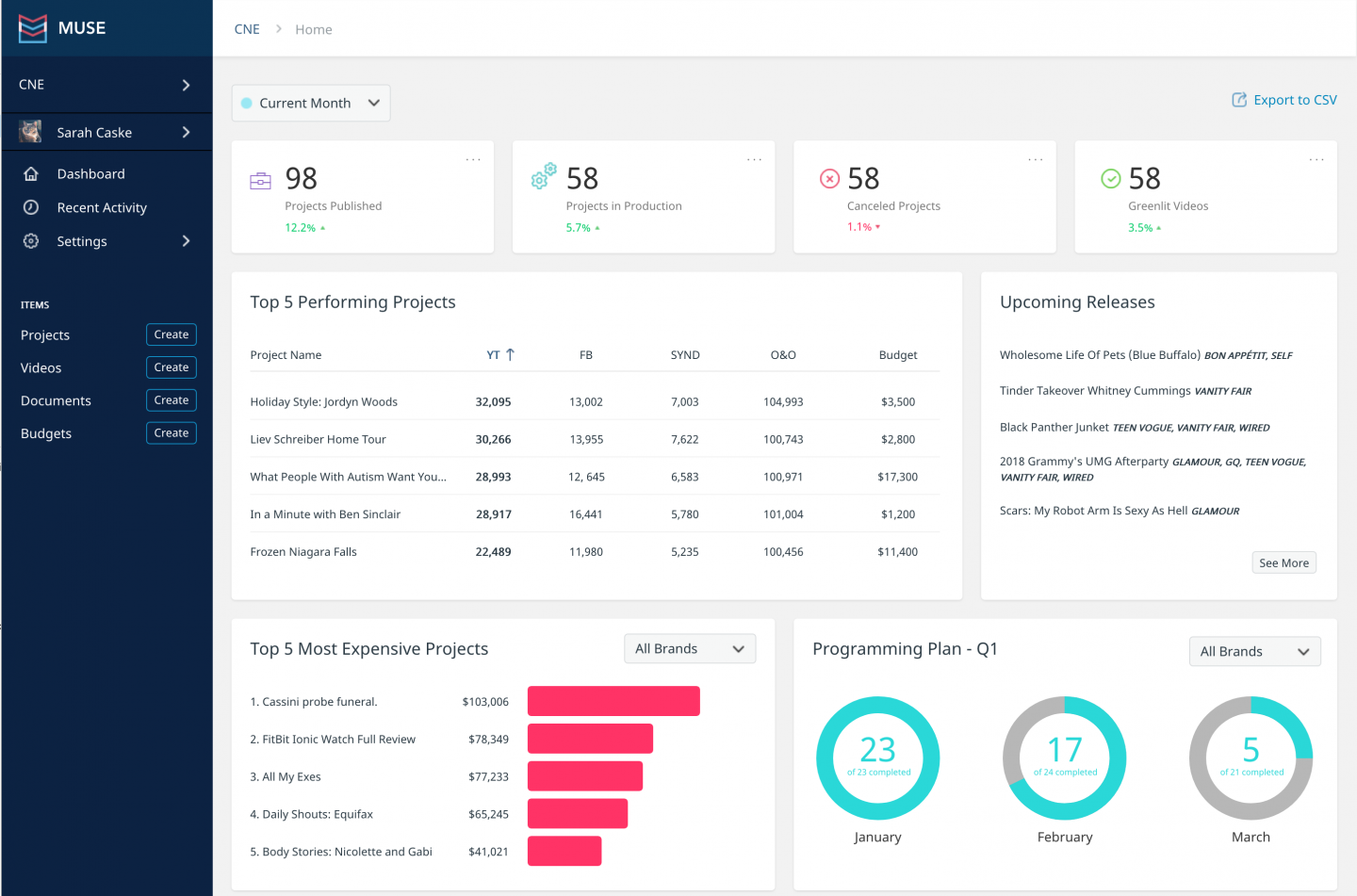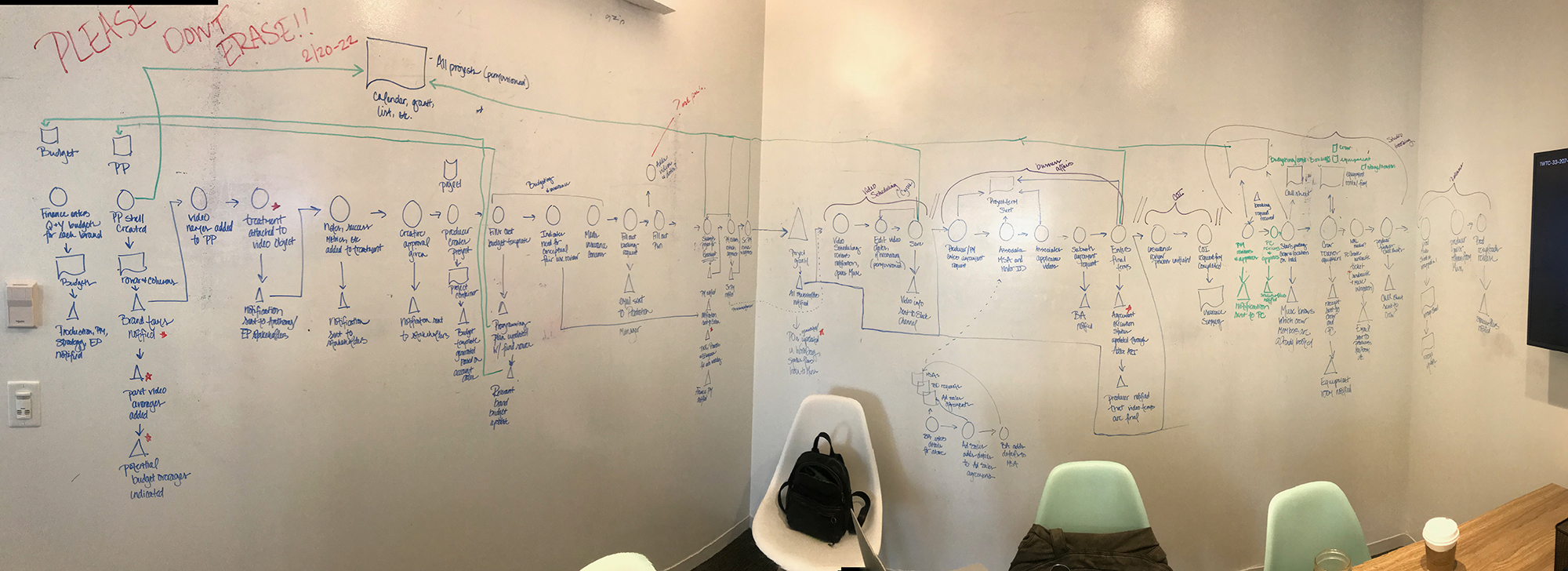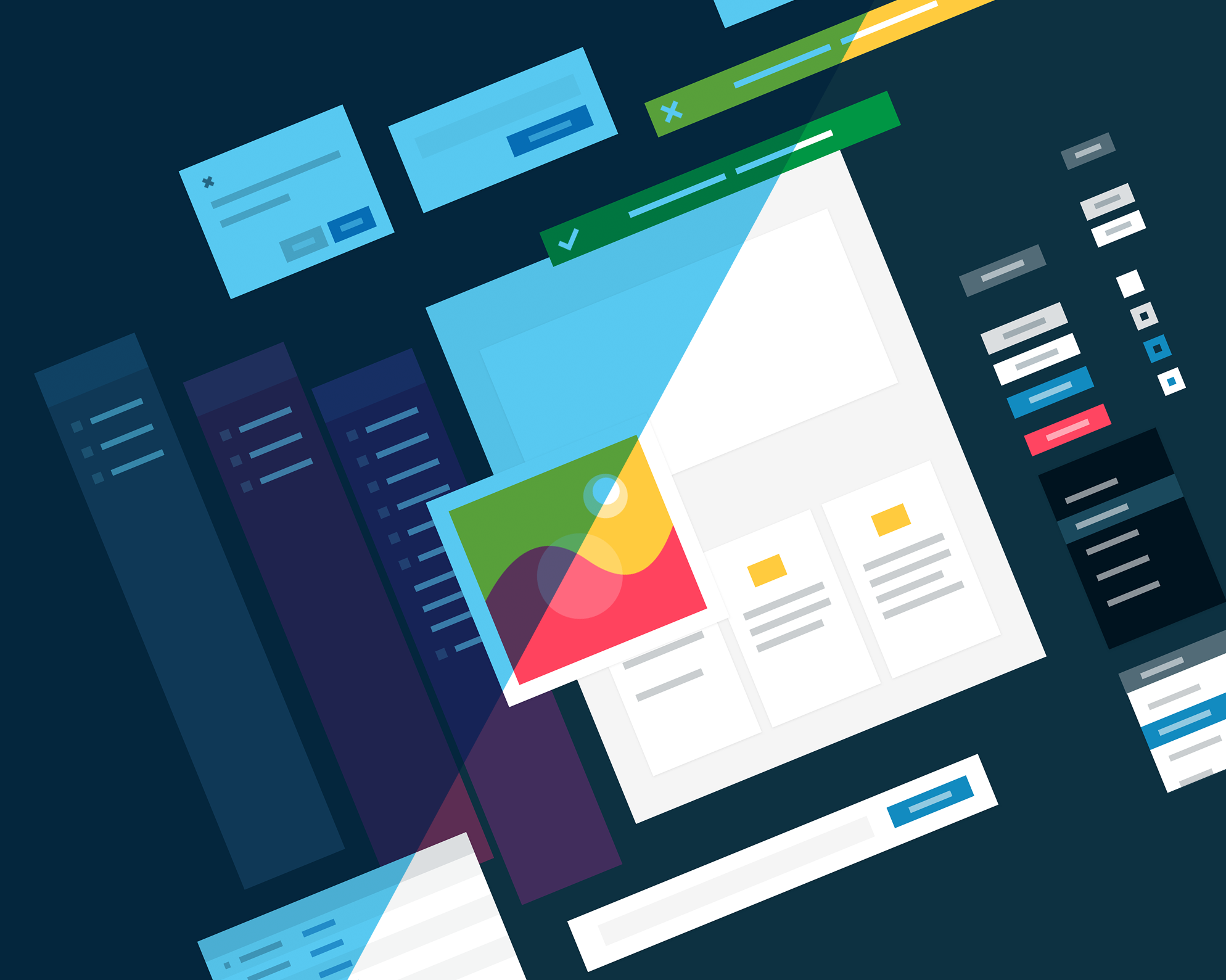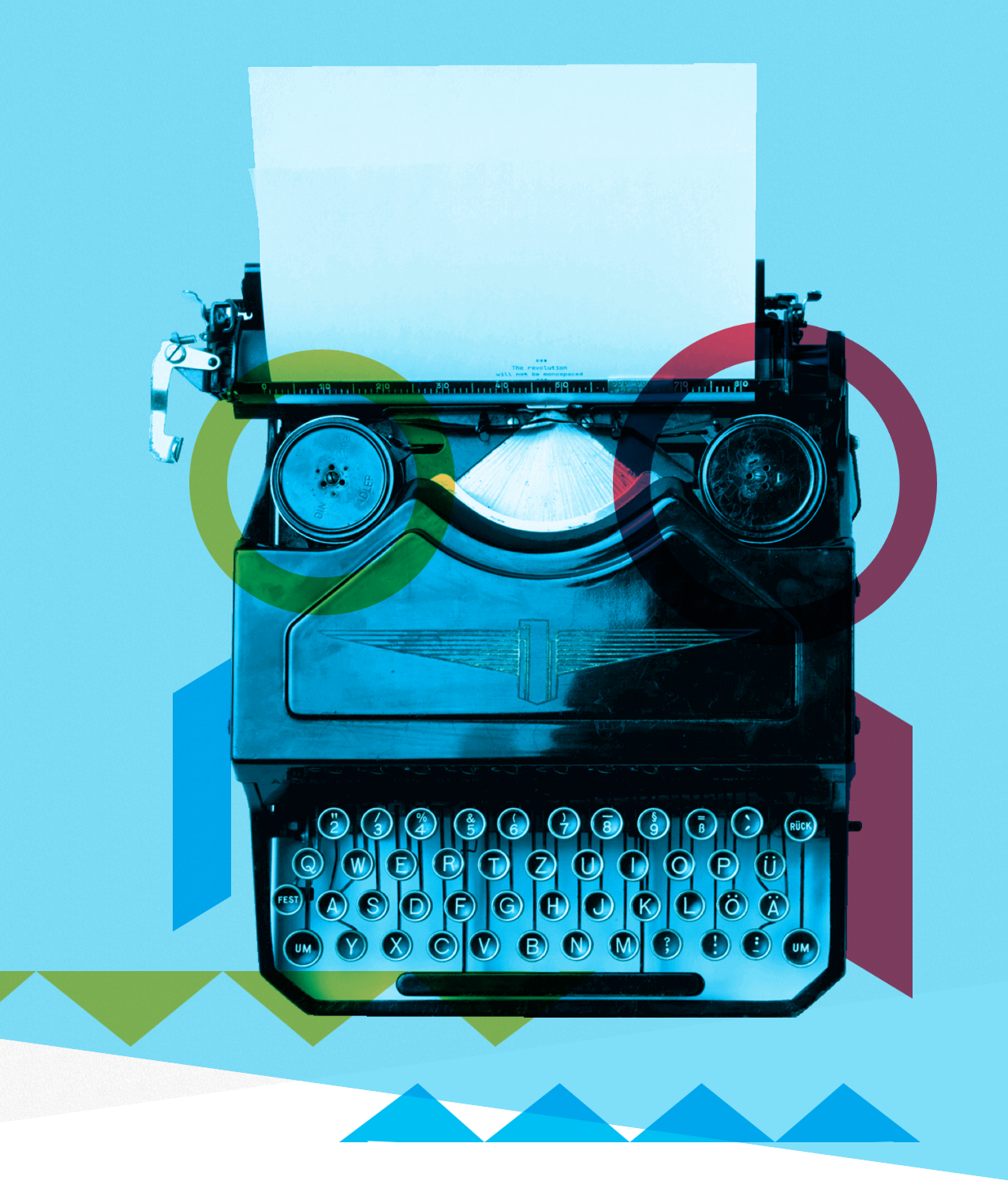A Design System Applied

LESSONS LEARNED
When faced with an enormous task such as designing a workflow management system for a video publication pipeline, having a well-formed design system in your back pocket is invaluable. The group we were servicing, during discovery, went through numerous iterations of their business flows as we worked with them to map out their needs. The design system allowed us to pivot often, at low cost, as they learned and re-learned how the future of their business could be shaped.
The Opportunity And Hypothesis
The digital group sought to produce a tool that would support editorial workflow needs from ideation through to the post-launch performance of all content across all brands, print digital, and video. The opportunity was multifold. For example, if Condé Nast had a unified org level workflow management tool, the business could then know the actual cost of a piece of content. It would have insight into opportunities to improve workflow and speed to market, visualize actual content volume across all brands, and much more.
Condé Nast Entertainment was recruited as the inaugural client. CNE is the video arm of Coné Nast, they develop, produce, and distribute video content across all 17 brands. Their current workflow process utilized a myriad of tools and involved an enormous amount of onboarding and specialized knowledge to operate.
How might we:
"How might we through rigorous ethnographic research, design thinking, and co-design, generate a flexible system that can support the diverse user needs in video production yet also meaningfully support other types of content production?"
Hypothesis:
Given the current landscape of workflow tools, we, as a design and research team, believed it possible to generate a set of extensible universally configurable patterns that would meaningfully support the workflow needs of content production across video, digital, and print.
The Challenge(s) Overcome
Work is culture. And culture changes slowly. It was almost immediately obvious that the current workflow systems at CNE had evolved over the years and the processes themselves were deeply embedded in the mental model of all interviewees. Our first challenge was to develop a way of working that empowered the interviewees such that they could "think outside the box" of their current mental model.
CNE was highly compartmentalized. Each department was run by the respective lead and over time that leads had developed workflows, tools, and systems that met with their internal culture. This included sets of labeling and nomenclature that were department-specific. As we were looking to unify the workflow, it was important to surface and normalize any unique items. This is harder than it sounds and during discovery, we were regularly surprised by new uncovered items, elements, and events that needed to be included.
As we began to develop a unified view of how CNE produces content, CNE themselves began to see opportunities for bettering their current process. This is always an excellent result but it made it difficult to build in an agile lean manner as we would regularly meet with them and they had revised their linear production process in the interim since our previous meeting.
The Players
LEADERSHIP
The CTO established CNE as the inaugural client for the system.
The CDO sponsored the effort and paved the way allowing us time with interviewees and meaningful support from the CNE side.
RESEARCH
Are true co-hero's of this story. The research team spent countless hours scheduling and facilitating numerous group and individual interviews and summarizing documentation. Research even invented a system such that CNE could visually map their ideal workflows.
DESIGN
The other true co-hero in this is the design team. There exists an interactive prototype representing nearly the entire proposed application. Pixel perfect, suitable for robust unmoderated testing. It's a thing of beauty.
PRODUCT
Throughout this incredibly complex process, product maintained the focus and direction. This was no small feat. Constantly negotiating prioritizations as the never ending stream of new discoveries presented themselves.
The Process

An image of the results of a research session
This was a net new effort with net new relationships, for a net new product. There was a lot of discovery work to be done.
We began with preliminary stakeholder interviews to open communication and define the structure of the organization. We then summarized this info and produced a very superficial graphic describing what we learned about their current workflow. We then shared this with CNE for sign off to ensure we were describing something they recognized.
(important: the map is not the territory)
Using this initial diagram, the research and design team interviewed engineering and product to gather their needs and concerns. We then used this information to design a program of deeper interviews focused on the stakeholders doing the work. We wanted a high-level picture of their current workflow and the array of tools in use.
As it turns out, shipping video content is a very complex affair. Over the next couple of months, we learned every "project" contained a vast array of touchpoints, dependencies, gated timeline events, and even restricted access at certain (non-sequential) stages. Their current system described a culture of deeply siloed departments. This presented challenges to the idea of an org level unified workflow system.
One of many unexpected outcomes: As we were meeting with CNE they were learning the same things we were. They were realizing the complexity of their system and were taking action on low hanging fruit. We would meet to review what we had learned from previous meetings to find they had redesigned their workflow in the interim.
Information gathering using the traditional method of service blueprinting was not working. We were generating maps that were so complex and so convoluted that they were unmanageable and certainly not actionable. We needed another way.

An image of the playing cards prototype used to successfully gather requirements.
So we invented a method. We hypothesized that workflow, in this specific case, could be described by a set of basic elements.
- "action" such as a button click as input or an email as an output,
- "view" such as a data table or a dashboard
- "event" such as a timeline event (which may be cause for an action)
- "type" such as a project or summary
- and tools such as "email", "Slack", and "Google docs"
Playing cards seemed like the best format so we tested and iterated on a set of prototype playing cards. Once satisfied we had coverage, we had a "real" set made by an actual custom card service. The custom cards had the fit and finish of normal playing cards which was fun to share with CNE.
In the co-design sessions using the cards, we noticed 3 important effects:
- The CNE team would successfully use the cards to describe what something does, instead of struggling with the "correct jargon".
- The limited cards narrowed the landscape of terms they were using to describe a process which made them more creative.
- The method was low stakes. Everyone was moving cards around on the table. Experimentation was fast and easy.
Using the co-designed set of flows covering primary use cases we built out screens using the newly minted design system. Because of the design system we were able to ship UI in days. At this point it was a continual loop of co-design, prototype, learn until we had comprehensive coverage for their workflow needs.
Ultimately, it was this prototype that became the basis for user acceptance, scope development, prioritization, and the design specifications document.
The Outcome
CNE completely redesigned its workflow process across the entire organization.
This redesign eliminated 70+ individual software tools, unified their nomenclature, and set them up to migrate to a single workflow system for the whole organization.
We shipped a high-fidelity, user-tested, and accepted prototype which would serve as the roadmap for future development.


